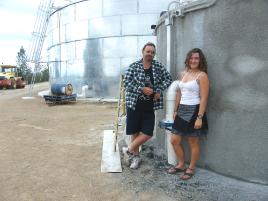Wastewater boon trickles down to Splendour in the Grass
Published on 18 February, 2010
This year's Spendour in the Grass event (July 30-Aug 01) will benefit from a wastewater project installed and tested by CQUniversity students and graduates, in conjunction with the recent Woodford Folk Festival...
Splendour will temporarily relocate to Woodfordia this year while a permanent venue is established at Byron Bay. PHOTOS by ANA STEVENSON
PhD researcher Ben Kele and his student helpers spent months preparing the $1.2 million 11-stage multi-barrier sewerage system, which was launched at Woodfordia by Deputy Premier Paul Lucas in December. Ben's also helped install 800m of new sewerage pipes and a new $80,000 treatment system to remove tannin colour from the drinking water.
He said it passed its first test with flying colours, handling up to 1 megalitre of waste per day during the Woodford Festival.
Previously, the festival has relied on a fleet of trucks to remove effluent in between each event, costing 11% of the carbon budget.
Ben is a PhD researcher and sewerage system contractor who has not only co-opted environmental engineering students but also his mum (camp cook) and father (site manager) to work alongside local tradesmen for 4 months of preparation works.
The new system starts with sieves channelled into large tanks which can "hold a festival worth of solids". The solids can be removed after the show or, if Ben has his way, can be used to run a biogas generator connected to the electricity grid.
The remaining liquid effluent then goes through a series of aeration stages to reduce faecal coliforms and pathogens. Then the volcanic rock filters absorb nasty chemicals (including endocrine disruptors) as well as smells and colours.
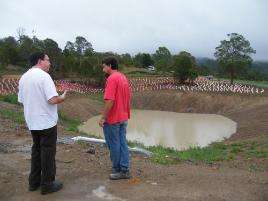
Ben Kele (right) shows the Deputy Premier around the site
The hydrogen peroxide dosing unit disinfects and enhances the biodegradation of organic matter, mimicking and expediting the natural process without creating harmful byproducts.
Fine-sand filtration follows and then the waste goes into granulated activated carbon filters to remove any remaining organic material plus more colour, odour and nutrients.
Finally, after some ultraviolet disinfection, the water ends up in constructed wetlands, ready for harvesting for nursery operations and revegetation, thus reducing the demands on the site's drinkable water stores.
Ben says the system is up to scratch because "we hit it with so many treatments that there is no room for failure".
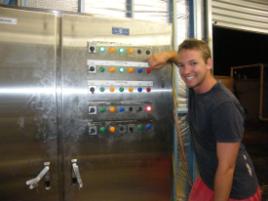
Final Year Engineering student Ross Percival is doing his undergraduate thesis on the Woodfordia wastewater treatment facility 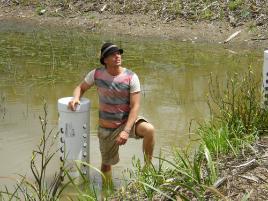
CQUniversity graduate JJ Bruce designed the constructed wetlands at the Woodfordia site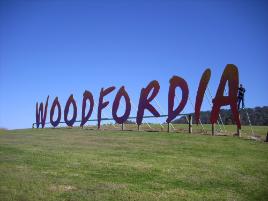
The Woodfordia sign


